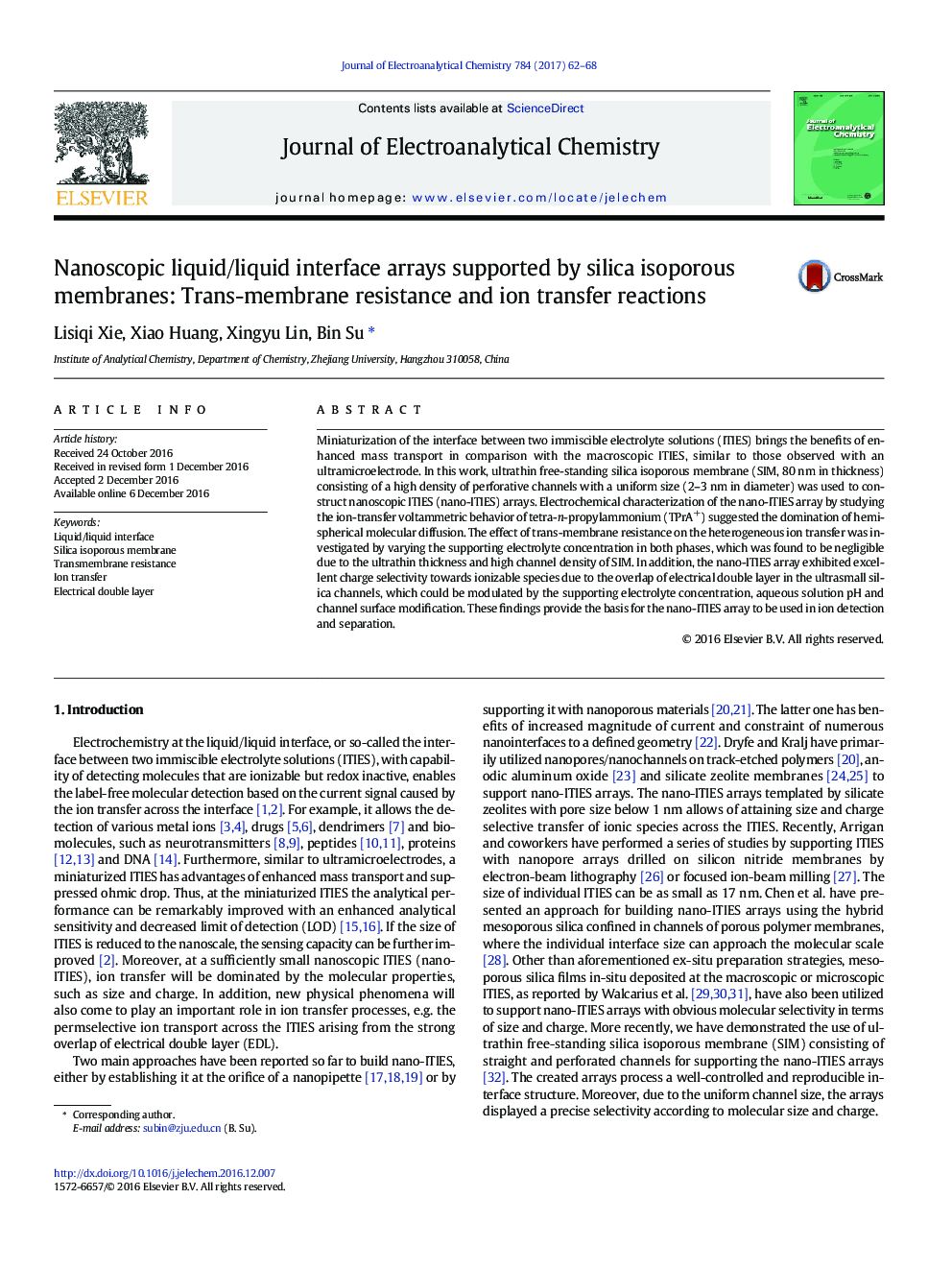| Article ID | Journal | Published Year | Pages | File Type |
|---|---|---|---|---|
| 4908048 | Journal of Electroanalytical Chemistry | 2017 | 7 Pages |
â¢Building nano-ITIES array with the support of silica isoporous membraneâ¢Sigmoidal steady-state current response due to the dominance of spherical diffusionâ¢Negligible transmembrane resistance due to high pore density and ultrasmall thicknessâ¢Permselective ion transfer gated by electrical double layer effect
Miniaturization of the interface between two immiscible electrolyte solutions (ITIES) brings the benefits of enhanced mass transport in comparison with the macroscopic ITIES, similar to those observed with an ultramicroelectrode. In this work, ultrathin free-standing silica isoporous membrane (SIM, 80Â nm in thickness) consisting of a high density of perforative channels with a uniform size (2-3Â nm in diameter) was used to construct nanoscopic ITIES (nano-ITIES) arrays. Electrochemical characterization of the nano-ITIES array by studying the ion-transfer voltammetric behavior of tetra-n-propylammonium (TPrA+) suggested the domination of hemispherical molecular diffusion. The effect of trans-membrane resistance on the heterogeneous ion transfer was investigated by varying the supporting electrolyte concentration in both phases, which was found to be negligible due to the ultrathin thickness and high channel density of SIM. In addition, the nano-ITIES array exhibited excellent charge selectivity towards ionizable species due to the overlap of electrical double layer in the ultrasmall silica channels, which could be modulated by the supporting electrolyte concentration, aqueous solution pH and channel surface modification. These findings provide the basis for the nano-ITIES array to be used in ion detection and separation.
Graphical abstractDownload high-res image (116KB)Download full-size image
